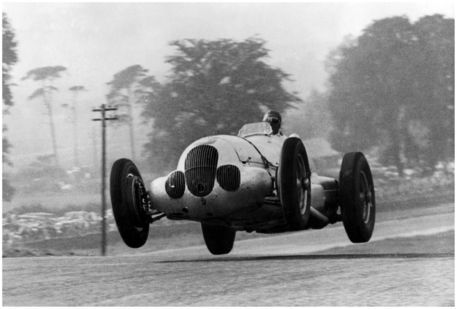While I usually try my best to focus on bang for your buck cars, today’s 1972 NSU will have difficulty fitting in to that category. It’s not that superminis aren’t valued as there are many who highly prize and collect the diminutive car class. But I’m talking about literal bang, or lack thereof. At 30 horsepower, the .6 liter single overhead cam inline-2 wasn’t the most powerful engine available, but the Prinz 4 was intended to break into markets where the barrier to automobile ownership was not only entry cost, but tax brackets. Namely, this was problematic in the U.K., where the original Mini reigned supreme. The Prinz 4 offered an alternative, albeit a slow one – even weighed down with only around 1,250 lbs, the two cylinders struggled mightily to motivate the car. Acceleration curves depended on what you had eaten for breakfast, but figure it was the strong side of 35 seconds to reach 60 m.p.h.. But this car was about affordability and economy rather than speed, and threw a dose of more upscale-looking class into a segment dominated by quirky designs:
Category: NSU
One carmaker that I’ve always admired but has been somewhat of an unknown to those in the US is Citroën. Founded in 1919 by Andre Citroën, this was a company that seemingly could predict future automotive trends. Whether it was unitary body construction, front-wheel drive, semi-automatic gearboxes, independent suspension, swiveling headlamps or hydropneumatic suspension, Citroën could seemingly pick and choose from a list forward looking ideas and bring them to market years before the competition. There was one manufacturer in Germany that mirrored Citroën to an extent: NSU. In the mid 1960s, they brought to market a car you could mistake for being a 2016 model. The Ro80. This was a car light years ahead of its time, but had one fatal flaw: the engine. The twin rotor Wankel engine proved highly unreliable led the company down the path of financial ruin, leading Volkswagen to acquire the company in 1969 and merge it with Auto Union. These advanced machines are rarely seen on these shores, but this one for sale in The Netherlands is making a strong case for importation.
CLICK FOR DETAILS: 1973 NSU Ro80 on Mobile.de
Comments closed
A 1935 Auto Union Type B Streamliner used for both records and the annual Avus race in Berlin
This past weekend weekend we saw a bit of hubris and bad strategy lead to Mercedes-Benz losing to Ferrari in the Malaysian Grand Prix. Despite the massive investment and seemingly pedantic attention to detail, the same problems existed in the 1930s for the company. Increasingly Mercedes-Benz needed to differentiate itself from Auto Union by undertaking extreme efforts. These efforts were not always profitable; indeed, one could argue that – as we saw last week – since they were already having difficulty delivering cars thanks to raw material shortages, undertaking new forms of racing and record-breaking might have seemed ill-conceived for the company. However, still at stake was preferential treatment from the government, especially when it came to lucrative military contracts. As such, Mercedes-Benz undertook some unlikely projects to not only gain international prestige for the Daimler-Benz model range, but indeed to curry favor with the government.
FOUR : PUSHING THE LIMITS – THE GOVERNMENT GOES RACING
A Mercedes-Benz W125 leads an Auto Union Type C – the height of power for these Grand Prix cars in 1937 As we’ve seen in…
Comments closedI’m somewhat ashamed to admit that my wife and I get some pleasure from watching the television show Hoarders. Thankfully I don’t believe that we’re in danger of being categorized as people who hoard anytime soon, but the show holds a certain fascination for me. One of my favorite games watching the show is to try to identify the cars that almost inevitably litter the yards of some of these hoarders. Discarded, covered in mountains of trash and sometimes partially disassembled, it’s always a bit of challenge to attempt to correctly identify what make and model that individual decided to hoard. It’s usually complicated by the fact that many of them are obscure cars from the 1960s and 1970s, such as this NSU Prinz 1000. Few were originally sold in the U.S. and even fewer remain in serviceable condition today. Looking through the photos provided by the seller, though, only reminds me of that game I play against myself; without the brochure, build plate and the two older photos of the outside of the car, go ahead and try to figure out what you’re looking at:






